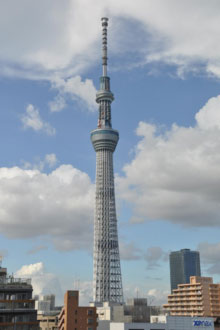Why do some radio stations get received better at night?
 Radio waves naturally travel in straight lines. Because of the curvature of the earth, no ground-based radio station transmits farther than 30 or 40 miles. Certain radio stations, however, especially in the short-wave and AM bands, can actually travel much farther than they transmit.
Radio waves naturally travel in straight lines. Because of the curvature of the earth, no ground-based radio station transmits farther than 30 or 40 miles. Certain radio stations, however, especially in the short-wave and AM bands, can actually travel much farther than they transmit.Short-wave can circle the globe, and AM stations travel hundreds of miles at night. This is because of the atmospheric layer called the ionosphere, which reflects certain frequencies of radio waves, allowing them to bounce between the ground and the ionosphere, making their way around the planet. The composition of the ionosphere is different between night and day due to the presence (or absence) of the sun. The composition at night allows for better reflection characteristics, hence the better reception at night.
Why do all FM radio stations end in an odd number?
What is a radio wave?
Radio waves are the radiation and detection of a range of frequency of electromagnetic waves. Frequency is the number of wavelengths that pass a particular point in one second and for radio waves the frequency is from 3 kHz to 300 GHz. Radio waves like all electromagnetic waves are able to carry information through space. Radio waves can travel unimpeded through objects like buildings or people but light waves can not. This is because radio waves have a very long wavelength allowing them to pass through objects that have shorter wavelengths like you and me without problem.
Radio Facts
- HEINRICH HERTZ a German inventor discovered wireless radio in the late 1800’s, when he proved energy (and thus sound) could be sent point-to-point without using wires.
- GUGLIELMO MARCONI an Italian inventor and businessman is consider the “Father of Radio” because he turned the Hertz discovery into a product (wireless radio), got a patent for it and started his own company for it.
- DAVID SARNOFF suggested the concept of “broad” casting (broadcasting) when he worked for the Marconi Wireless Telegraph Company of America? His suggestion was that the company should use wireless radio to send music into people’s homes. Bonus facts: Sarnoff was working on the night the Titanic hit the iceberg; he decoded wireless messages from the Titanic.
- LEE DEFOREST is consider the first “unofficial Disc Jockey” because he played music from the top of the Eiffel Tower?
- KDKA in Pittsburgh was the first licensed commercial radio station in the United States? Bonus facts: KDKA was started by Frank Conrad and was owned by Westinghouse, which made radio kits and sold them for 10 dollars at Horne’s Department Store. Conrad advertised the radio kits on his show on KDKA, which was the first form of radio advertising, but they were NOT true commercials (like spots that we have today).
- WEAF in New York City (owned by AT & T) played the first TRUE COMMERCIALS (similar to what we have today) in the United States?
- The first official news report played on a licensed radio station in the United States was the Harding vs. Cox presidential election results reported on KDKA.
- The Golden Age of Radio was from the late 1920’s to the late 1940’s when radio experienced its greatest popularity and when it was the dominant medium in the United States ? Bonus facts: During this time, radio had block programming (similar to TV today) in which programs were broadcast in blocks of time, usually 15 minutes, 30 minutes or one hour. Shows included sitcoms, soap operas, action shows, detective shows, dramas, news shows, variety shows, etc……Examples of shows: Dick Tracy, Amos and Andy (most popular ever), The Shadow, Ozzie and Harriet, Jack Benny Show, The Lone Ranger, The Green Hornet, etc.
- During the Golden Age of radio, corporations formed to create programming that would be played on many stations. The stations were either owned by the corporations or were affiliated with the corporations. These corporations where called Networks. Bonus facts: The first network was NBC (National Broadcasting Corporation). Originally, NBC was actually 2 networks, the Red Network and the Blue Network. When the FCC ruled that a corporation could only own one network, NBC sold its smaller one, the Blue Network, which the new owner then turned into ABC (American Broadcasting Company)………A third network was popular during the Golden Age of Radio, called CBS (Columbia Broadcasting System).
- During the Golden Age of Radio, drama programs were named Soap Operas (the sponsors were soap companies).
- During World War II, radio became the dominant medium for news about the war. Edward R. Murrow, was the first and most famous network war correspondent from World War II . Bonus fact: Murrow worked for CBS and is consider by many to be the greatest and most influential journalist in broadcasting history.
